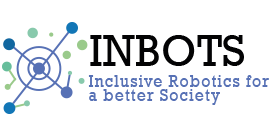A look at The Ethics of Technology
Txetxu Ausín, Aníbal Monasterio Astobiza, Mario Toboso, Manuel Aparicio, Ricardo Morte and Daniel López (projects INBOTS and EXTEND, CSIC)

Robots, replicators, automatons, androids… are some of the different names given to self-moving machines. From the animated statues and hydraulic devices of the Middle Ages to the duck of Vaucanson, through the Greek myths that imagined fireworks, robots and self-propelled statues that have captivated the imagination and fed fears about the possibility of creating intelligence and artificial life. Today, the technology dreamt of by myths and sought after by protoengineers of various eras is already possible.
Robotics, a term coined by scientist and science fiction writer Isaac Asimov, who investigates the design and construction of robots. Robotics and brain-machine interfaces are part of these disruptive technologies that are developing at great speed and whose potential to transform society is enormous. While they open up promising opportunities in areas such as medicine, work, care, administration… they raise important ethical, legal and political questions. The INBOTS project, a group of ethical experts from the CSIC Institute of Philosophy, the University of Vienna, Dublin City University and ETH, among others, are addressing questions about the ethics needed for this new scenario, how to develop inclusive, sustainable and socially responsible technologies, how these disruptive technologies affect human beings’ self-understanding, and what are the future consequences on the labour market. It is clear to say that robots are no longer the protagonists of ancient myths or popular folklore, nor are they exclusive objects of science fiction and the cinema.
Every year, 1.25 million people die in car accidents, more than 90% of them are caused by a driving error.
It is estimated that in the next 20 years, 38% of the current work will be automated, so we can free ourselves from the most tedious tasks and dedicate our time to more creative work. Every year, 1.25 million people die in car accidents, more than 90% of them caused by a driving error. Robotics will allow a leap from assistance to rehabilitation, increasing the autonomy of people with functional diversity.
On the other hand, Social robots will be able to help us fight unwanted loneliness. In a world where less and less sex is practiced, robots can increase well-being and pleasure, broadening the sexual experience and even improving intimate relationships between humans.
But… Will we stop interacting with each other if the experience is pleasant? In addition to reproducing stereotypes, will sexual robotics foster a culture of rape through fantasy? Will we end up delegating the care of our elders to autonomous robotic systems? If we develop close emotional ties with them, will they become dependent or able to manipulate us? As the gender gap in STEM professions remains high, will the robotics of the future be dominated by a non-inclusive vision? Will there be space for reflection from humanities and social sciences? Will we face scenarios where the decision to kill a person is made by autonomous lethal weapons? If an accident cannot be avoided and if an autonomous car has to decide between the life and death of a person, who should it save and who should be sacrificed? On whom would the responsibility fall? Will it be possible to relocate people whose jobs are automated or will they be condemned to irrelevance? Will we really have more free time every day?

Robots place us before a mirror in which we look at ourselves and learn from our own lights and shadows
Robots – from the earliest conceptualizations before technology made them possible – have worried us because we have never been clear about whether they would help us or pose a threat. The possibility of creating life and artificial intelligence confronts us with ourselves. Robots put us in front of a mirror in which we look at ourselves and learn from our own lights and shadows. Just as they promise us great benefits, they can also have disastrous consequences. Creating life and artificial intelligence can help us because we can treat robots as “slaves” to do tasks that we ourselves are unwilling or unable to do – think of robots and space probes or robots that care for and assist our elders. But at the same time, the widespread use of robots or artificial systems and their perception as social agents or actors can transform our human relationships (there are already documented cases in which a member of a marriage talks more to his virtual assistant, of the Siri type, than to his partner).
We aim to define an inclusive robotics – of the people, by the people and for the people – that takes into account ethical principles such as non-maleficence, good consequences, autonomy and justice and that addresses situations such as vulnerability, dependency, care or functional diversity. Inclusive robotics can only be achieved if industry and research establish collaborations and dialogue with other disciplines such as philosophy, law, anthropology, medicine or economics. Only in this way we will build a new social contract and a more just society where human beings and machines, which are increasingly part of our lives, live together. Let us begin the public debate.
